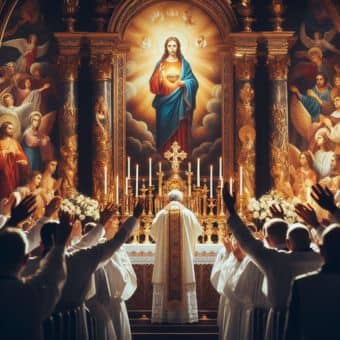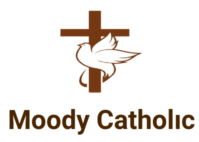The Mass Explained
Understanding Its Parts and Their Meaning
The celebration of the Mass, also known as the Eucharist, is the heart of Christian worship. Rooted in centuries of tradition, it is a profound communal experience embodying the faith, doctrines, and communal bonds of Christians across the globe. To understand the Mass is to glimpse into the essence of what it means to be part of the Christian community.
This blog post contains affiliate links. When you click on a link on this page and make a purchase I may earn a small commission, at no additional cost to you. Thank you for your support.
The Structure of the Mass
The Mass is typically divided into two main parts: the Liturgy of the Word and the Liturgy of the Eucharist, each comprising various rituals that unfold in a carefully prescribed sequence:
The Introductory Rites
The Mass begins with the Introductory Rites, which include the Entrance, the Greeting, the Penitential Act, the Kyrie Eleison, the Gloria, and the Collect. This acts as a preparation phase, meant to foster communal unity and ready the participants’ hearts and minds for worship.
The Entrance
The Entrance invites the congregation into a sense of worship as the priest and any attendants process to the altar while singing the Entrance Chant.

The Greeting
Next, the Greeting follows, in which the priest welcomes the congregation, followed by the Sign of the Cross and a liturgical greeting.
The Penitential Act
The Penitential Act is a moment of reflection on one’s sins and an asking for God’s mercy — a spiritual cleansing to remove the barriers between the worshippers and God.
The Kyrie Eleison
The Kyrie Eleison (Lord, have mercy) contains a thrice-repeated plea for mercy from God, which further emphasizes our human need for the divine compassion.
The Gloria
On Sundays, outside of certain liturgical seasons such as Advent and Lent, the Gloria is sung. This ancient hymn is a joyous recognition of God’s glory.
The Collect
Concluding the Introductory Rites, the Collect is a prayer that gathers the individual prayers and intentions of the congregation into one and sets the tone for the Mass.
The Liturgy of the Word
The Liturgy of the Word features readings from Scripture and culminates in a homily that contextualizes these readings within modern life.
The Readings
Typically, there are two or three scripture readings — one from the Old Testament, a Responsorial Psalm, a New Testament epistle, and the Gospel reading.
Deepen Your Faith with the St. Joseph Sunday Missal
Enhance your Mass experience with the St. Joseph Sunday Missal. This large-print missal provides a clear and comprehensive guide to the liturgy, featuring all Sunday and Holyday Masses, as well as the Easter Triduum.
With easy-to-follow text and a beautiful design, this missal is perfect for active participation in your Catholic faith.
Elevate your spiritual journey with the St. Joseph Sunday Missal. Order your copy today and deepen your connection to the Mass.
The Homily
The homily serves to interpret and explain the meanings of the day’s Scripture readings and relate them to the lives of the congregation.
The Creed and Prayers of the Faithful
Following the homily, the congregation recites the Nicene or Apostles’ Creed, affirming their faith, and then offers the Prayers of the Faithful, addressing the needs of the community, the Church, and the world.
The Liturgy of the Eucharist
The Liturgy of the Eucharist is the core of the Mass, during which the bread and wine become the Body and Blood of Christ.
The Presentation of the Gifts and Preparation of the Altar
Gifts of bread and wine are brought to the altar, and the altar is prepared for the Eucharistic Prayer.
The Eucharistic Prayer
This is the most solemn part of the Mass, a prayer of thanksgiving and consecration. It includes the Preface, the Sanctus (Holy, Holy, Holy), the consecration of the bread and wine, and the Mystery of Faith.
The Communion Rite
Following the Lord’s Prayer and the sign of peace, the congregation partakes in the consecrated host, signifying unity in Christ.
The Concluding Rites
The Mass concludes with a dismissal given by the priest, blessing the congregation as they are sent forth to live out the Christian mission.
Understanding the significance and sacredness of the individual parts of the Mass can enhance the spiritual journey of each participant. The rhythm and flow from one part to another are not arbitrary—they lead the faithful through a narrative of redemption, community, and commitment to the Christian way of life.
In embracing both the communal and the personal dimensions of the Mass, Christians come together in a timeless expression of faith that resonates with the diverse and dynamic body of the Church.
Looking for unique Catholic gifts? Check out our gift guide!

